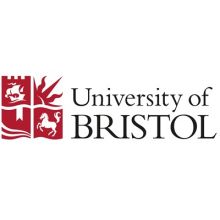Jo Johnson has called on top universities to “redouble their efforts” to attract students from poorer backgrounds after hitting out at a “worrying lack of progress at some institutions”.
The universities and science minister's comments follow the publication of new sector-level data on university access, which shows that many of the UK’s most prestigious universities had failed to significantly improve the diversity of their student intake over the past five years.
Just 80 of the 2,620 UK undergraduates (3.1 per cent) admitted to the University of Oxford in 2014-15 were from low-participation neighbourhoods, only 10 more than the 70 (2.6 per cent) admitted in 2009-10, according to data released by the Higher Education Statistics Agency on 4 February.
At the University of Cambridge, 85 students came from these low-income backgrounds (3.3 per cent) in 2014-15, which was the same as five years earlier (3.1 per cent).
At the University of Bristol, just 3.8 per cent came from low-participation neighbourhoods in 2014-15, up from 3.4 per cent five years earlier, while Imperial College London saw the proportion of first-year students from low-participation neighbourhoods increase from 3.7 per cent to 3.9 per cent over the same period.
Commenting on the latest data, Mr Johnson said it “underscore[s] a worrying lack of progress at some institutions and underline how vital it is that highly selective universities redouble their efforts to reach out to students from disadvantaged backgrounds".
His comments follow accusations by the Prime Minister, David Cameron, that Oxford is “not doing enough” to find places for non-white and poorer students.
In an article in the Sunday Times, he demanded that universities go “the extra mile” to find places for non-white and poorer students, telling universities to “show people that ours can be a place for everyone, regardless of background".
The latest Hesa figures show 11.4 per cent of those starting university in 2014-15 came from low-participation neighbourhoods, up from 10.9 per cent in the previous year and 9.6 per cent in 2009-10.
The proportion of university students educated in state school also at its highest level – 89.8 per cent – since records began in 1998-99.
“These figures show that our ongoing reforms are working and more people now have the opportunity to get to university,” said Mr Johnson.
He added there is “still much more to do to boost social mobility, which is why we have announced plans for a new transparency duty to shine a spotlight on university admissions processes".
In a statement, the Russell Group, which represents 24 selective universities, said its members had doubled the number of students on free school meals and invested “a huge amount of time, effort and resources” in attracting poorer students.
The latest statistics show a “welcome increase in the percentage of students at Russell Group universities from the most disadvantaged backgrounds”, said Wendy Piatt, the group’s director-general.
“Ensuring our doors are wide open to talented and able students from all backgrounds really matters to us and real progress is being made,” said Dr Piatt.
She added there were “still far too many children from disadvantaged backgrounds underachieving at school and receiving poor advice and guidance.”
She continued that it would "take time, commitment, and sustained action from a range of agencies to raise pupils' aspirations, increase attainment and improve the advice and guidance offered".
Register to continue
Why register?
- Registration is free and only takes a moment
- Once registered, you can read 3 articles a month
- Sign up for our newsletter
Subscribe
Or subscribe for unlimited access to:
- Unlimited access to news, views, insights & reviews
- Digital editions
- Digital access to THE’s university and college rankings analysis
Already registered or a current subscriber?






